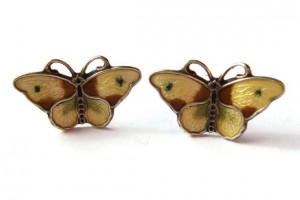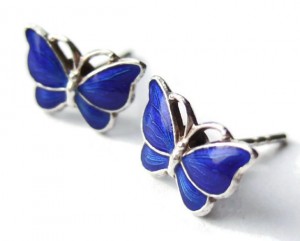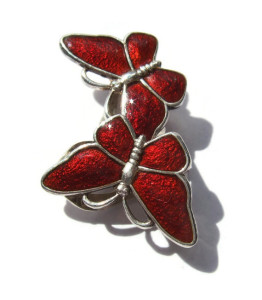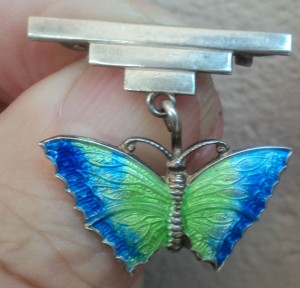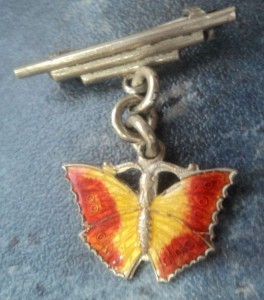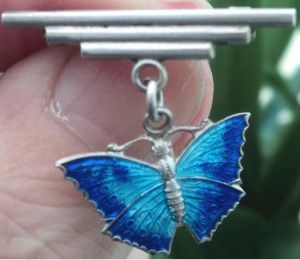I am still in my insect jewellery phase, and one of the types of which I have a few in my Etsy shop is enamel butterfly jewellery.
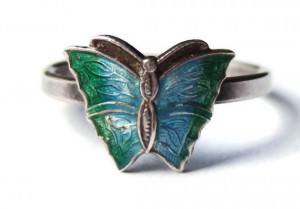
Art Deco enamel and sterling silver butterfly ring. 1930s, British. For sale in my Etsy shop (click photo for details). (NOW SOLD).
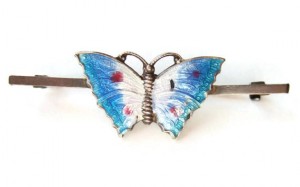
Art Deco enamel and sterling silver butterfly bar brooch. 1930s, British. For sale in my Etsy shop (click photo for details).
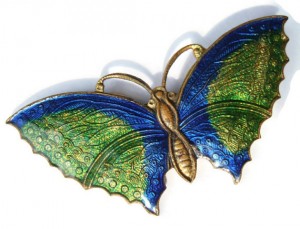
Art Deco enamel and brass butterfly brooch. 1930s, British. For sale in my Etsy shop (click photo for details). (NOW SOLD).
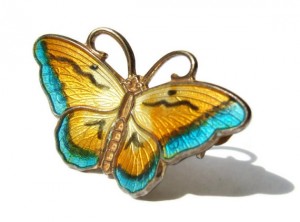
Hroar Prydz enamel, sterling silver and vermeil brooch. 1950s, Norway. For sale in my Etsy shop (click photo for details). (NOW SOLD).
In addition I have had two pairs of butterfly earrings in my shop, both of which have sold:
I have been trying to find out more of the history of this type of jewellery. From what I can make out, the trend for enamel and silver brooches and pendants of this type started in England in the early part of the 20th century, with jewellers such as Charles Horner, John Atkins and Sons, and EAP & Co making lovely examples in silver and enamel. Charles Horner is well known for his Art Nouveau enamelled pieces, and also his thistle and ribbon silver knotted brooches and hatpins, but he also produced beautiful butterfly brooches:
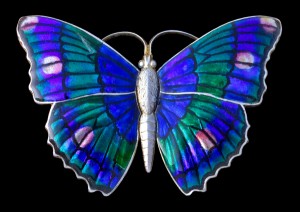
Charles Horner enamel and sterling silver butterfly brooch, hallmarked Chester, 1918. For sale at Tadema Gallery.
while John Atkins and Sons is perhaps the most famous maker of butterfly jewellery from this date:
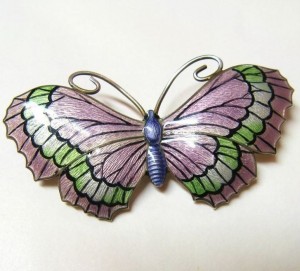
John Atkins and Sons enamel and sterling silver butterfly brooch, hallmarked Birmingham 1916. For sale at The Antiques Centre, York.
Other companies continued the trend, through the 1920s and 1930s (when some of the butterflies are placed on distinctively Art Deco three bar mounts).
In the 1950s the very talented Scandinavian enamel jewellers picked up on the trend, the Norwegians in particular, and makers such as David-Andersen, Marius Hammer, Kristian M Hestenes, O F Hjortdahl, Aksel Holmsen, Ivar T Holth, Finn Jensen, Bernard Meldahl, Einar Modahl, Hans Myrhe, Arne Nordlie, OPRO, Hroar Prydz, and J Tostrup all produced enamelled butterfly jewellery. I featured some of the David-Andersen butterfly pieces in my earlier blog post on Norwegian enamel jewellery.
These pieces are highly collectable, and understandably so—the beautiful colours and designs, and the skill of the makers make these lovely pieces to own, with their jewel-like bright colours. A sign of how collectable they are is provided by the number of digital collections on Pinterest. Search for ‘John Atkins butterfly’ on Pinterest and you get this fabulous array of jewellery: totally droolworthy and I could lose hours looking at them all.
